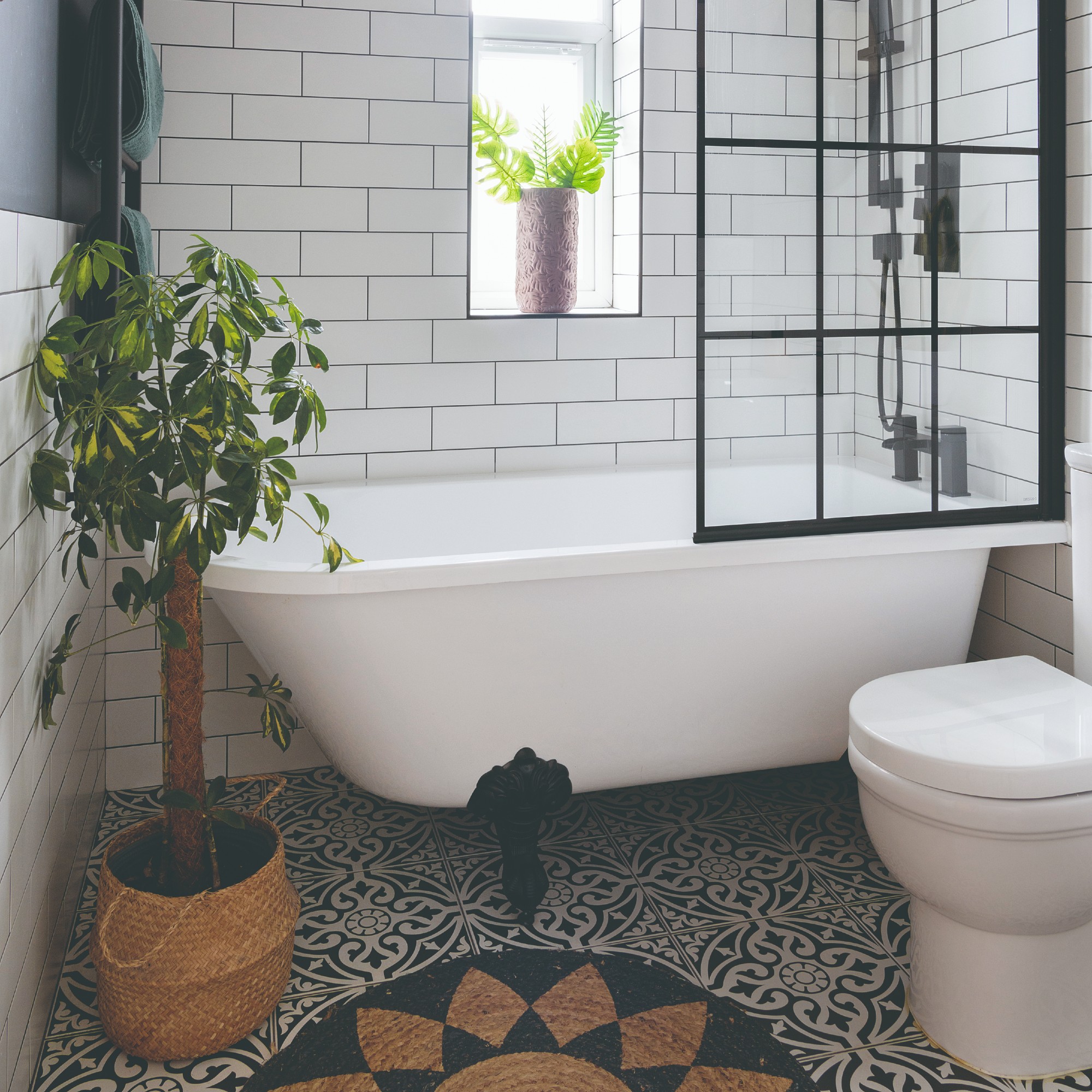
If you’ve ever had to face the task of removing old tiles, you’ll know that it’s a lengthy, messy and tedious task. Which is why tiling over the old ones instead is so tempting in order to save on time, energy and avoid throwing your home into disarray. But can you tile on top of tiles?
Whether you’re looking to realise new kitchen tile ideas, retile the bathroom or lay down new flooring in the hallway, you technically can tile on top of an existing layer of tiles. But experts are unanimous in their recommendation to avoid tiling over tiles wherever possible as this time-saving shortcut may cause issues further down the line.
But if you’re dead set on taking this DIY job on, then this is everything you need to do to achieve the best and most successful result possible according to the pros.

Can you tile on top of tiles?
Just like plastering over tiles, tiling over them is also not widely recommended by experts. And it's not a particularly easy DIY project either.
‘Technically you can tile on top of other tiles, but it is something we strongly recommend against,’ says Grazzie Wilson, head of creative at Ca’ Pietra. ‘Removing old tiles can be time consuming and messy, but choosing this option means that any problems with the old tiles won’t affect your new ones. The extra thickness can also make it more difficult to accurately install fixtures and fittings.’
Cara Yates, painting and decorating category manager from Toolstation, agrees, ‘While it can save a lot of time and mess, any issues that arise from the old tiles, such as them becoming loose, will affect the new tiles and may require them to be removed and replaced. The raised height of a new tile layer could also cause problems around the home, potentially blocking any doors from opening and closing correctly. Instead, it is recommended to remove the original wall tiles down to the wall surface.’
But if removing the old tiles is not possible or you just really don’t want to do it, this is what you’ll need to do and stock up on to help you with the job.

What you’ll need
- Sugar soap liquid like this one from Everbuild at Amazon
- Tile primer like the Tilemaster Prime + Grip Primer at Amazon
- Tile adhesive like the Ultra Tile Fix ProFlex SP+ES Standard Adhesive at Amazon
- Trowel for applying tile adhesive like this one at Amazon
- A paint brush or paint roller to apply tile primer such as this one at Amazon
1. Assess
Start the process by assessing the existing layer of tiles.
‘You’ll need to ensure the existing tiles are soundly fixed to the floor or wall, that there’s no cracked tiles,’ says Abbas Youssefi, director of independent tile retailer, Porcelain Superstore. ‘Your new tiles will only be as good as the old tiles they’re fixed to. Gently tap each tile - if it sounds hollow it may come loose, causing problems further down the line. You’ll need to remove and re-fix this tile first.’

2. Clean
Once you’ve assessed and fixed any potential damage to the tiles, you’ll need to give them a proper clean as dust and other dirt can interfere with the adhesive’s effectiveness. And the best way how to clean bathroom tiles (or any other tiles really) is with sugar soap.
‘Make sure to prep the old tiles beforehand, ensuring the tile surface and surrounding grout is completely clean to prevent any mould from growing out of sight behind your new tiles,’ Cara says.
Abbas continues, ‘Give the surface of the tiles a clean - sugar soap diluted in warm water is perfect for this. Grease, dirt and dust can affect the adhesive bond, causing new tiles to come loose.’

3. Prime
Priming helps the actual tile adhesive stick better to the tiles.
‘Primer helps to ensure a stronger bond between the tile and the surface, preventing them from becoming loose and lifting over time,’ Cara says.
‘You’ll also need to still use a primer, even when tiling onto tiles. Look for one that offers extra grip and bonding properties as you are tiling over a smooth surface,’ Grazzie explains.

4. Apply adhesive and tiles
Once you get all the prep steps done, you can finally apply tile adhesive with a trowel, whether you’re tiling a bathroom floor or the wall.
FAQs
What is the best adhesive for tiling over tiles?
An acrylic non-slip tile adhesive is recommended for tiling over tiles with one particular formula being the favourite.
‘If you are absolutely set on tiling over your old tiles, then look to choose an adhesive such as Ultra Tile ProFlex SPES Standard Set Flexible S1 Adhesive. This adhesive has extended open time and is specially formulated with extended workability, which enhances both adhesion and flexibility,’ Grazzie recommends.

What primer to use when tiling over tiles?
When tiling on top of tiles, applying primer is still a must.
‘I'd recommend Tilemaster Prime Plus. It's easy to use - can be applied straight out the bottle using a roller or paint brush. It also helps to increase the 'open working time' of your tile adhesive, giving you more time to get the tiles flat and level,’ Abbas says.
So while we don’t exactly recommend doing this, if you do end up tiling over your existing tiles, this is what you need to keep in mind and do the best job possible.







